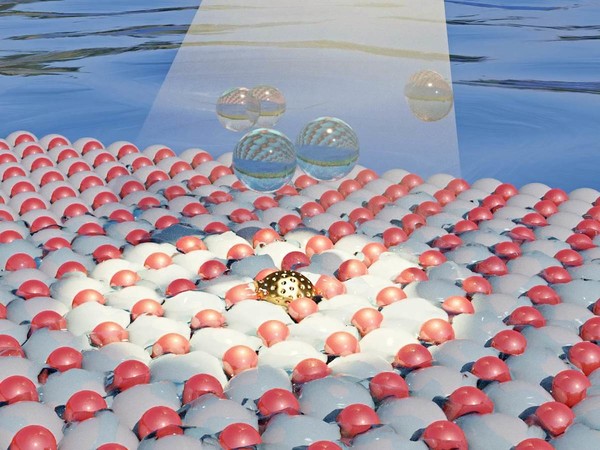Thanks to a revolutionary scientific process, Czech researchers will demonstrate how to develop new materials for obtaining “green” energy or reducing carbon dioxide emissions in the air and will demonstrate the possibility of ending dependence on fossil fuels and preventing potential energy and climate crises in the future. Scientists from the Czech Advanced Technology and Research Institute (CATRIN) of Palacký University Olomouc and the Centre for Energy and Environmental Technologies (CEET) of VŠB-Technical University in Ostrava (VSB-TUO), together with world-renowned research teams from Germany and Italy, are launching today a three-year European project worth 1.5 million euros.
In the scientific part of the project, the major role will be played by hydrogen production deploying solar water splitting, electrochemical conversion of waste carbon dioxide, and especially single-atom engineering. This approach is supposed to enable the development of new materials that will significantly increase the production of green hydrogen or raise the possibility of carbon dioxide transformation into useful chemicals with high added value.
“In our international team we want to develop technologies that will enable to anchor single atoms to the surface of suitable semiconductors and control the chemical and electronic properties of these atoms. The results show that this new atomic engineering approach makes it possible to increase severalfold the efficiency of materials used for photocatalytic and photoelectrochemical conversion of solar energy into hydrogen, which is crucial for translating green fuel production technology to practice. Atomic engineering is now piquing interest of researchers worldwide, but we are among the pioneers of its use for these energy and environmental applications,” said the Principal Investigator of the project, Štěpán Kment from CATRIN.
Researchers from both domestic universities have joined forces with European leaders in the field of green energy extraction. One of them is the team of Patrik Schmuki from the University of Erlangen–Nuremberg, Germany. Schmuki, who also works at CATRIN, has long been involved in research on the production of hydrogen, the so-called fuel of the future, using water, solar energy and semiconductor nanomaterials. “Single atom engineering is a direction that can change many areas of science in the future. Our results show that it is in the field of renewable energy extraction using solar radiation that materials enriched with suitable atoms can bring about a fundamental shift in increasing hydrogen production,” confirmed Schmuki.
The scientific team also wants to focus on the computer design of materials, alongside understanding their functioning. To model the processes, they will use unique supercomputer facility at VSB-TUO, which belongs to the most efficient in Europe. “We want to understand through the methods of computational chemistry how individual atoms increase the efficiency of key photochemical and photoelectrochemical processes and on the basis of this knowledge to optimize a new generation of materials for power engineering. In Ostrava, within the experimental part, we will focus on the possibilities of atomic engineering for photochemical transformation and removal of carbon dioxide, whose global production fundamentally contributes to global climate change,” explained Radek Zbořil on behalf of VSB-TUO.
A team from the University of Trieste in Italy will also address this global challenge, i.e., reducing carbon dioxide emissions, using, among other things, a unique device employing synchrotron X-rays to describe the structure of materials. A team led by the renowned electrocatalysis expert and author of several landmark papers in the journal Science, Paolo Fornasiero, will study the possibilities of electrochemical conversion of carbon dioxide. “Carbon dioxide can be converted electrochemically by suitable nanomaterials into useful chemicals or energy sources such as formic acid, carbon monoxide, ethylene, ethanol, or methane. We will focus on graphene-based nanomaterials enriched with suitable metals prepared in the past by colleagues in Olomouc and Ostrava. Our joint effort will be to increase conversion efficiency and to develop new single-atom materials so that carbon dioxide valorisation technologies can be applied in real life,” said Fornasiero.
In addition to the specific scientific results, an important part of the project is also cooperation in an international team and sharing experience and expertise. These activities will be supported by planned exchanges, summer schools, or joint workshops. A total of 21 countries shared around 100 awarded grants under last year’s TWINNING call (HORIZON-WIDERA-2021-ACCESS-03-01). Czech research teams and universities received nine projects.
